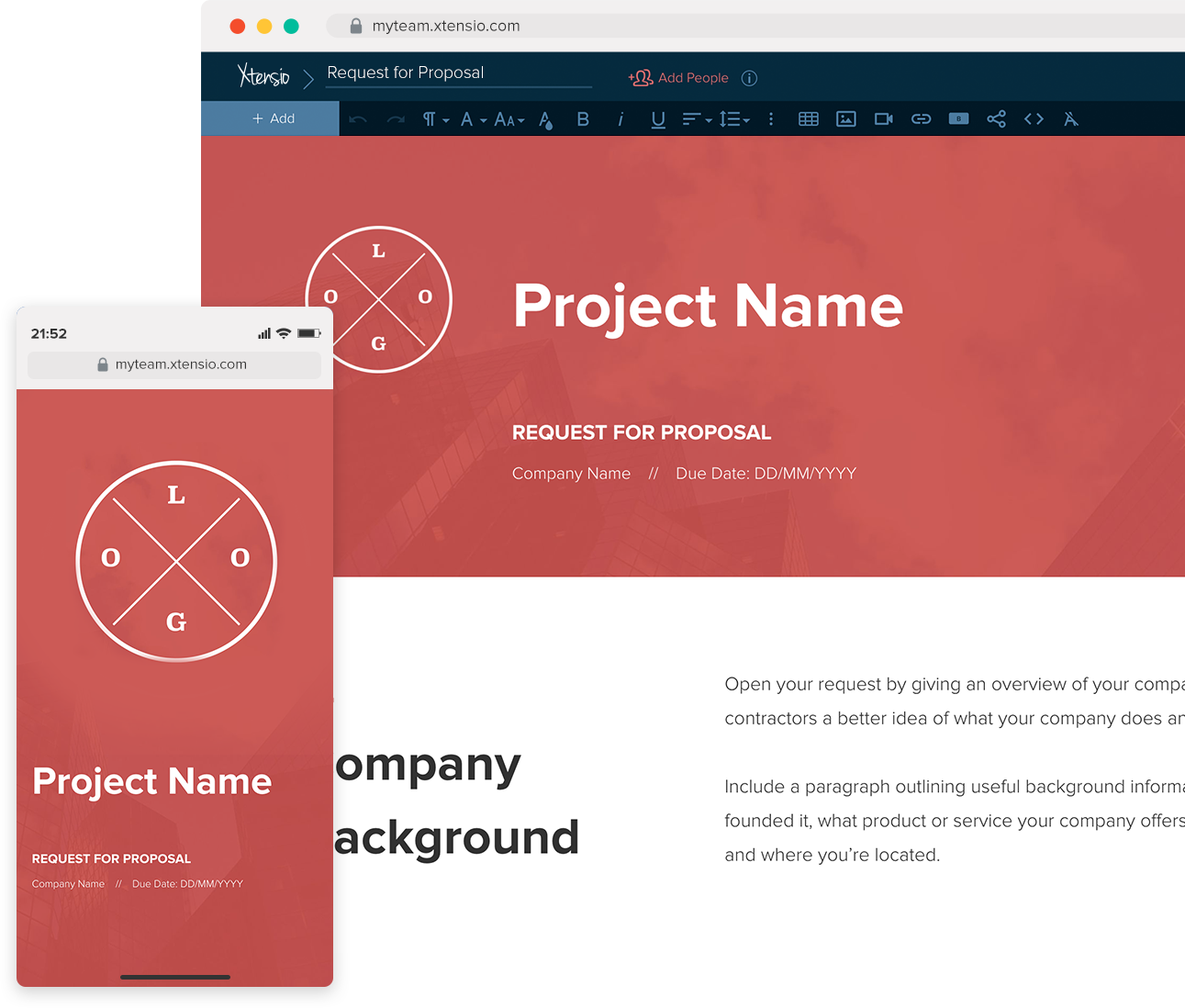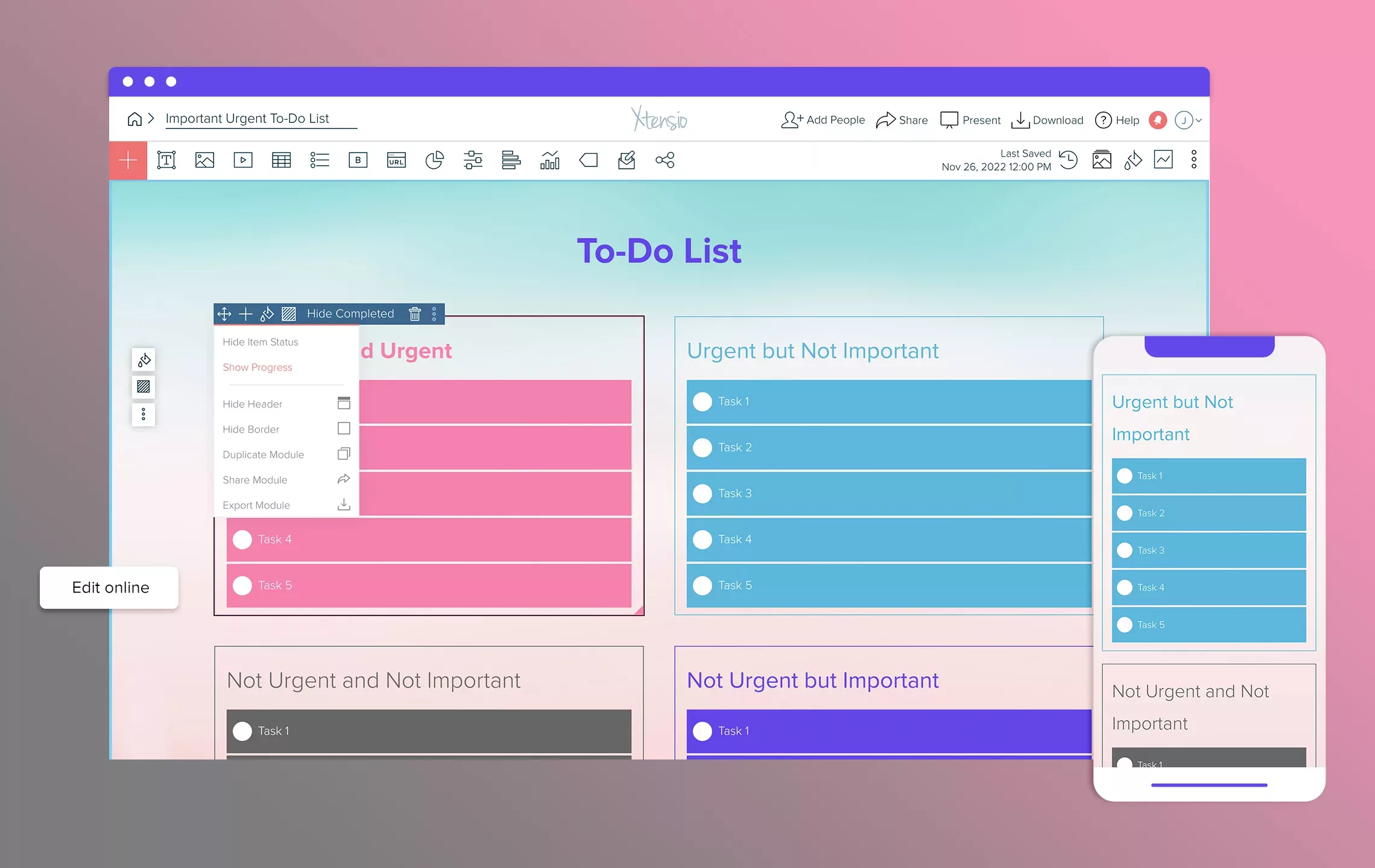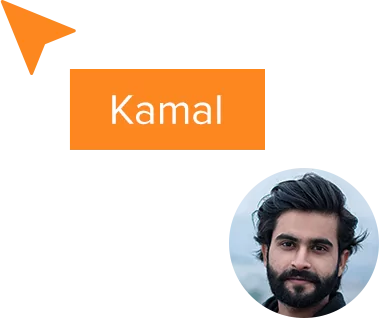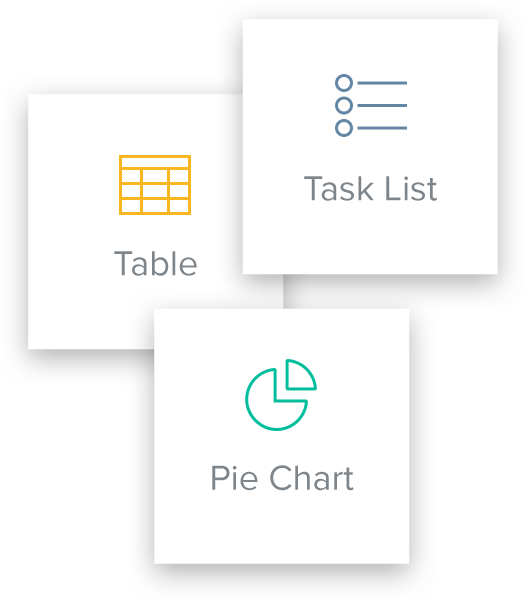
RFP – Request for Proposal: Complete Guide, Process, and Templates – 2023
Table of Contents
Imagine you’re running a booming bakery business, that has expanded to multiple locations. To streamline operations, say you need custom inventory management software that can handle your unique requirements. Sometimes as a business owner, you may not be completely sure what exactly you need and how it’ll get done. In this case, requesting proposals and the bidding process becomes crucial.
Without an RFP process, you might end up with generic software that doesn’t cater to your unique requirements, or overpay for features you don’t need. The RFP response ensures you find the best fit for your business, at the best price, helping your business to efficiently manage its delicious inventory and continue delighting customers.
By creating an RFP, you’re sending out a clear message to software development companies: “Here’s what we need. Can you build it?” The RFP outlines your specific needs and invites developers to propose their solutions, cost, and timelines.
What is an RFP (Request for Proposal)?
Simply put, it’s a document that organizations use to solicit proposals from vendors or service providers to fulfill their business needs.

It typically outlines the project requirements, timeline, budget, and evaluation criteria. It’s a way for the organization to clearly understand the different options available and choose the best proposal that meets their needs. For example, a construction company might issue an RFP when they need to subcontract out an electrical wiring project. Vendors specializing in electrical wiring would then submit their proposals, and the construction company would choose the best fit for the job.
Understanding the Different Types of RFP
Regarding procurement and vendor selection, RFP is one of the most commonly used methods. However, there are different types of RFP documents. Each type serves a different purpose and function. Some RFPs communicate government requirements while others ask to submit suggestions. Understanding these types can help you determine the most suitable one for your business needs. Requests for proposals (RFPs) are also used in negotiated acquisitions to communicate Government requirements to prospective contractors and to solicit proposals.

1. RFP – Request for Proposal
This type of RFP document is the most widely used one. It is used when the desired outcome is complex, and the scope of work is unclear. In this type of RFP, vendors are typically asked to provide detailed proposals outlining their approach to the problem, experience, methodology, and pricing. Since this type of RFP is more detailed, it usually results in longer evaluation times to help narrow down the prospective contractors.
Example: A company planning to introduce a new software system for their organization usually ask for RFP responses from various software vendors. They will include details on the company’s needs and requirements, and the interested vendors will then submit their suggestions.
2. RFQ – Request for Quotation
RFQs are typically used when the company is clear about its requirements and is looking for a vendor to provide a specific product or service. A company would use RFQs to do price comparisons and vendor evaluations. They are much shorter than RFPs, as vendors only provide pricing information based on the specifications requested. This is not a detailed proposal, as it mostly contains the best and final offer.
Example: A company needs to purchase a new copier machine, so they will send RFQ to multiple vendors, asking for quotes on the brand and model of the machine they requested.
3. RFI – Request for Information
RFIs are generally used when a company is looking to gather informal information about a vendor. It is considered an initial inquiry to determine the capabilities of a vendor. RFIs may be used before RFPs to narrow the list of RFP targets or allow the company to learn about a vendor’s abilities and consulting services before RFP.
Example: A company is planning to host a corporate event and wants to know who the best event planners in their area are and what services they provide. They would use RFIs to gather information and do reviews of the bidders before sending RFPs.
Types of RFPs in Digital Marketing
Not all RFPs are the same. Different types of RFPs cater to various business needs and contract terms. Let’s see some RFP types that are used widely in marketing.
Marketing RFP
This type of RFP is related to everything related to digital transformation and marketing strategy. It covers strategy, market research, advertising campaigns, media buying, creative production, etc. Organizations in this need find it essential to have a marketing RFP to ensure the right team can execute their vision effectively.
Social Media RFP
With billions of individuals active on social media worldwide, it’s no surprise that businesses utilize these platforms to leverage their brands. A social media RFP covers the strategies, content, data analysis, and the team’s approach to executing social media campaigns that align with your brand’s message. If social media is a primary focus of your business strategy, a social media RFP is crucial in finding the multiple bids that can help you achieve your desired outcomes. Usually, in social media rfp requirements, there’s a full and open competition going 24/7 for the lowest price bid and the best quality.
Branding RFP
Branding refers to how your business presents itself to the world. A branding RFP typically covers the guidelines, company background/story, brand objectives, color scheme, project scope, visual assets, and strategies to reinforce your brand identity. Every organization, whether a start-up or a large corporation, must have a well-defined brand strategy. The most suitable branding team must be selected to help establish a unique and powerful brand image.
Design RFP
If you’re looking to update or create a visual identity and design assets, such as logos, websites, business stationery, brochures, or marketing collateral, a design RFP can help. This RFP type covers design process frameworks, strategies, and the designers’ expertise in creative concept development tailored to your brand’s visual identity guidelines.
Website RFP
A website RFP entails the entire process of designing, creating, and optimizing your website. It covers a website’s design, user interface, development, and maintenance strategies. Whether creating a site from scratch or revamping an existing one, ensure that you create an RFP outlining your goals, requirements, budget, and deadlines.
Workplace RFP
A Workplace RFP covers Human Resources aspects, such as background checks, employee benefits, and employment policies. If you’re a small business owner that needs help with hiring, retention, or employee policies, you can benefit from creating a workplace RFP. It outlines your expectations and the desired outcomes from team collaboration and HR policies.
PR RFP
A public relations (PR) RFP contains strategies to engage with the media, enhance brand reputation, and respond to negative publicity. A well-designed PR strategy that aligns with your brand’s goals is essential in keeping your business relevant and top of mind. PR agencies that respond to this RFP are typically skilled in effective communication strategies and media relations. They might even have links to a specific government agency that your business needs to collaborate with for better press coverage!
Government and Non-profit RFP
Businesses operating within the government or non-profit sector must follow specific legal and regulatory requirements. This type of RFP is issued to vendors who meet these sectors’ legal and regulatory requirements. The RFP is typically more complex, outlining the activities that must comply with the regulations set by the respective regulatory bodies. This is widely used by Government agencies and government entities.

The Ins and Outs of the RFP Process
The RFP (Request for Proposal) process may sound daunting to those who have never encountered it. But in reality, it is just a systematic approach to procurement. With Xtensio you can select the best rfp template based on your needs, edit it with our easy-to-use editor, and share it with prospective vendors.
1. Determining Needs
The first step in the RFP process is determining your organization’s needs. You need to define what problem you are trying to solve, what you need to accomplish, and what outcomes you hope to achieve. This will help you create a clear and comprehensive RFP that addresses your business needs. Gather input, technical details, and feedback from key stakeholders to shape your RFP and ensure that it aligns with your business goals.
2. Writing
Once you clearly understand your business needs, it’s time to start crafting your first RFP. The RFP should include a detailed description of your requirements, timeline, budget, and evaluation criteria. Be precise about what you seek in a vendor or partner. This will help to attract the right candidates and make the evaluation process easier. You can select amazing rfp templates from Xtensio: Avoid a paper-based system.
3. Distributing
After you have written the RFP, it’s time to distribute it to multiple bidders. You can distribute it through channels like your company website, industry associations, or third-party websites. Ensure you include a deadline for submitting proposals and a point of contact for vendors to ask questions or seek clarification. This will facilitate a smooth and efficient RFP process.
4. Evaluating
Once you have gathered all the proposals, it’s time to start evaluating the best service provider. This can be a time-consuming process, but it’s essential for selecting the best vendor or partner for your business needs. Start by reviewing the proposals against your requirements and evaluation criteria. Then, shortlist the most promising proposals and schedule follow-up meetings or demonstrations.
You should also conduct due diligence on the vendors to ensure that they meet your standards and requirements. Keep a record of the remaining bidders and eliminate the ones without a formal bid.
5. Reevaluating
After you have completed the initial evaluation, it’s time to refine your shortlist and reevaluate the potential suppliers. This may involve requesting additional information, customer references, or negotiating terms and conditions. You should also consider the vendor’s reputation, experience, and compatibility with your business culture and objectives. This will enable you to make an informed and confident decision.
6. Decision-making
Finally, it’s time to decide and select the winning bidder that best meets your requirements. After reviewing all the proposals and completing due diligence, you should prepare a detailed evaluation report that justifies your decision and outlines the next steps. Once you have selected the vendor or partner, it’s important to communicate the outcome to all the stakeholders involved in the RFP process.
Quick Tip. Don’t go after the lowest-priced bid! Your decision should depend on multiple criteria.

Why Write a Request for Proposal?
Imagine you’re looking for a new car. You wouldn’t just walk onto a lot and buy the first car you see. No way! You’d do your research, read some reviews, consider your budget, and make an educated choice after visiting a few dealers.
When it comes to business, it’s the same story. No one wants to invest time and money in a project that might not deliver the desired results.
Writing an RFP lets you know exactly what you need and expect from potential vendors. It’s your chance to ask vendors to give you their best ideas and solutions to your business needs. By creating a clear RFP, you can ensure that you get the best possible proposals from vendors and ultimately make a more informed decision. So put on your car-buying hat and write that RFP.
Dont’s of an RFP
An RFP is essential when finding the right vendor for your project. However, asking “yes” or “no” questions won’t get you far.
To ensure you find the perfect partner, you need to create specific questions that require thoughtful and detailed answers. Open-ended questions that get them to explain their thought process when solving a problem are ideal.
For example, you could ask them to share how they tackled a similar issue in the past and whether they faced any unforeseen difficulties.
By being specific and engaging in your RFP, you’ll be more likely to uncover the right vendor for your needs.
RFP (Request for Proposal)Template
Let’s learn how to write an RFP that yields the best proposals and helps you select the right vendor for your project.
Project Background
Before diving into the project’s specifics, it’s essential to provide context by detailing the reasons behind the project. To give an example, we can explain that we have been providing vocational training using paper resources, in-person training, and video content. And our goal is to streamline our training materials, move towards a blended learning model, and digitize our paper-based resources. We also want to track the performance of our learners and instructors effectively.
Scope of Work
The next section of your RFP should detail the scope of work for the potential vendor. This section should cover all deliverables, project timelines, and required tasks.
In our example, the scope of work would be to develop and deliver a cloud-based learning management system that includes the following features: course creation and management, learner registration and management, e-learning content creation and management, instructor management, assessments, reporting and analytics, and third-party tools integration.
The vendor then should provide a timeline for the project, including a project initiation date, a test date, and the final delivery date.
Requirements and Specifications
This section outlines the technical and functional requirements of this example learning management system. You should be as specific as possible to ensure that vendors understand your expectations.
Our example requires the learning management system to be cloud-hosted, mobile-responsive, and accessible via different browsers. We also require the system to support different types of e-learning content, including video, audio, and text formats. We want the system to integrate seamlessly with our existing student database and third-party tools such as Zoom and Google Analytics. Lastly, we need the system to track learner progress and provide analytics to our organization.
Target Deliverable Schedule
One of the primary objectives of an RFP is to ensure a smooth and timely execution of a project. This is why it is essential to establish a target deliverable schedule as part of your RFP. The deliverable target schedule should outline the project timeline, including milestones and due dates for each phase.
Defining this will help you and your vendor to stay on the same page throughout the project lifecycle. To establish a realistic target deliverable schedule, consider the following factors:
- The complexity of the project
- Availability of key resources
- Acceptable risk level
- Potential external dependencies
Possible Roadblocks
In every RFP, there is a possibility of roadblocks or challenges that may hinder the project’s success. While you cannot predict every potential risk or challenge, it’s important to anticipate as many as possible and address them in your RFP. By doing this, you provide your vendors with an understanding of the possible complications that may arise during the project.
Some common roadblocks that should be indicated in your RFP include the following:
- Budget constraints
- Limited resources
- Technical limitations
- Regulatory hurdles
- Communication barriers
Budget Constraints
Budget constraints are the most crucial aspect of an RFP. They can determine the scope of the project, the vendor selection process, and ultimately the project’s success. In your RFP, it is essential to outline the budget, including spending thresholds and limitations.
Furthermore, try to explicitly state your desired return on investment (ROI). This will give your vendors a clear understanding of the budgetary allocation and help them to plan accordingly.
Work Examples
A significant aspect of any RFP is providing work examples. These work examples could include previous projects that your vendor has done, relevant experience or qualifications, and any case studies that the vendor has on the given topic. Requesting work examples gives you a better idea about the vendor’s capabilities and expertise in the particular area of interest. It also helps you gauge the quality of their work and provides insight into what you can expect if you hire them.
Selection Criteria
Selection criteria are the evaluation standards that the vendor must meet to qualify for the bid. It is a critical factor in procurement as it ensures that the vendor meets the project requirements. Some commonly used selection criteria are experience, technical expertise, references, and price.
It is essential to outline the selection criteria in the RFP to avoid any confusion or ambiguity. Additionally, weighting each criterion to ensure it aligns with the project’s priority is crucial.
Contact Information
Contact information is the vital section of the RFP that provides the vendor with the point of contact for the project. It is crucial to provide the appropriate contact information to ensure the vendor can reach out quickly in case of any queries. Some crucial information that should be provided includes the name of the project manager or the procurement officer, phone number, email address, and office address. Additionally, it is recommended to provide the timeline for the response to the RFP to help the vendor plan their workflow accordingly.
Proofreading and Editing
The RFP is a formal document representing the company’s image; therefore, it should be error-free and grammatically correct. It is essential to proofread and edit the RFP before final submission to ensure it is error-free. Additionally, it is crucial to have someone else read it to ensure the document is coherent and meets the project requirements.
Best Proposal Software Tool to Help You Manage RFPs
As a business owner, it’s vital to effectively manage proposal responses, Requests for Proposals (RFPs), and bids. Even though proposal management is important, it’s usually a tedious and time-consuming process, especially if you’re using the traditional way of sending proposals via email.

Xtensio
Teams use Xtensio to create, share, and manage branded documents and presentations, easily and effectively. Browse Xtensio’s extensive template library and features.
Conclusion
Writing an RFP requires a strategic and comprehensive approach. You want to ensure that your document conveys your expectations, requirements, and timeline while remaining flexible to potential changes or challenges. Use the tips outlined to write an effective RFP.
While it may seem time-consuming, a well-written RFP can save you time and money and prevent any misunderstandings during the project. Remember to be clear and concise in your communication, and always leave room for your vendor’s expertise and input.










